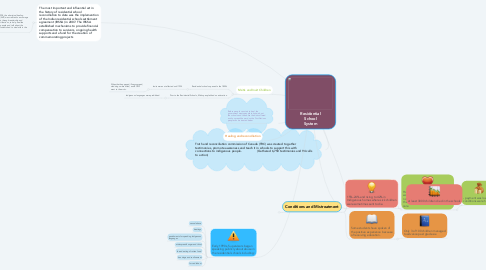Residential School System
von Logan Burke


1. Truth and reconciliation commission of Canada (TRC) was created to gather testimonies, promote awareness and teach it in schools to support this with connections to indigenous people. (Gathered 6,750 testimonies and 94 calls to action)
2. Before people can start to heal, the government wants people to know about the schools and the abuse the kids suffered and to spread the word so the First Nations people can be treated better.
3. The most important and influential act in the history of residential school reconciliation to date was the implemention of the Indian residential schools settlement agreement (IRSSA) in 2007. The IRSSA established mechanisms to provide financial compensation to survivors, ongoing health supports and a fund for the creation of commemorating projects
3.1. March 31 1998, the aboriginal healing foundation (AHF) was created to encourage and support, through readership and funding contributions, to help heal the Indigenous people and talk about the abuse the students had to deal with in the schools
4. Early 1990s, Supervisors began speaking publicly about abuse in the residential schools including:
4.1. sexual abuse
4.2. beatings
4.3. punishments for speaking Indigenous languages
4.4. widespread hunger and thirst
4.5. forced eating of rotten food
4.6. bondage and confinement
4.7. forced labour
5. 15%-24% and rising to 42% in Indigenous homes where sick children were sometimes sent to die.
5.1. at least 3000 children died in the schools
6. Métis and Inuit Children
6.1. Residential schools opened in the 1800’s
6.1.1. Inuits were not affected until 1924
6.1.1.1. When that happened, illness spread, sled dogs were killed, and RCMP went to the arctic.
6.2. Prior to the Residential Schools, Métis people’s had no education.
6.2.1. Indigenous languages were prohibited.
7. Conditions and Mistreatment
7.1. Over 40% of the teacher had no professional training
7.1.1. However, many and dedicated people worked within the schools. - staff did not just taught, they also supervised the children’s work, play and personal care
7.1.1.1. - payment was low - work conditions were hard
7.2. Some students have spoken of the positive experience because of receiving education.
7.2.1. Only 3 of 100 children managed to advance past grade six.

